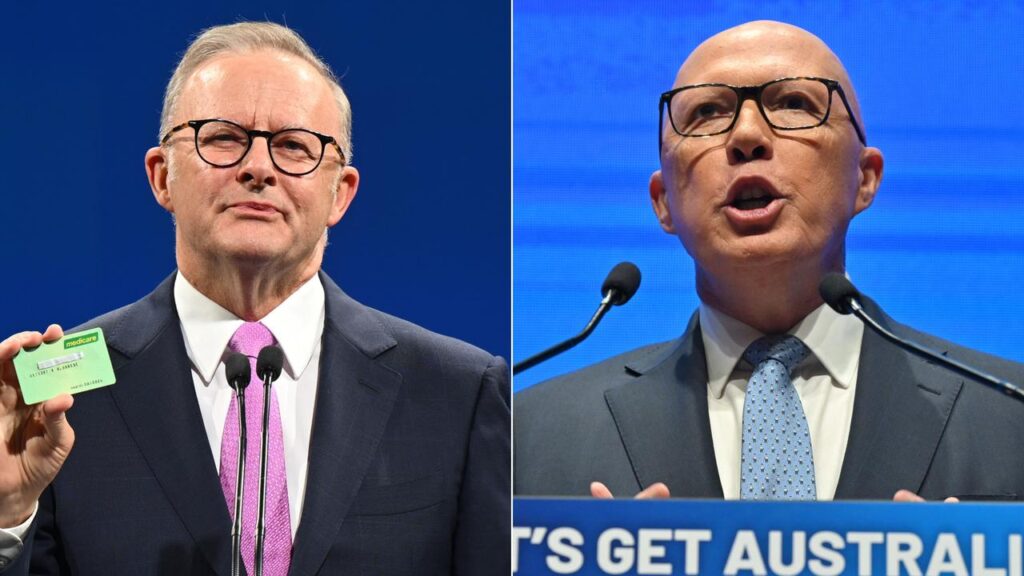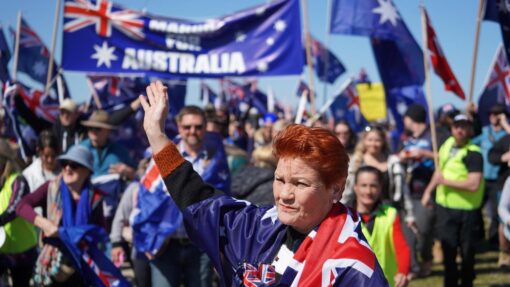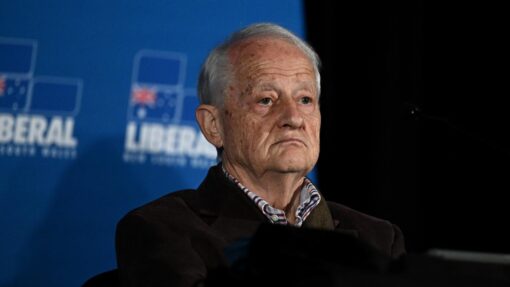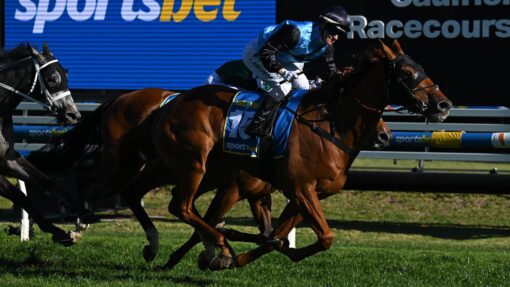Leaders ease off on messaging as Aussies tune out
Kat Wong, Tess Ikonomou and John Kidman |

As Peter Dutton talked tough on crime, Anthony Albanese stressed the importance of diversity and the two came no closer than the opposite ends of the nation.
With seven days until Australians who are yet to vote head to the polls, the opposition leader took his message to Queensland’s far north and Top End capital of Darwin on Saturday, while the prime minister started out in Melbourne before heading south to Launceston.
Listening to the concerns of Northern Territory voters on the issue of crime, Mr Dutton promised without offering detail to get tough on the issue.
“You need financial support and moral support … to provide a secure environment for people to lead their lives,” he told them.
“The current government is too focused on what’s happening in the inner cities of Sydney and Melbourne with the Greens.”

Earlier in Cairns, he announced 25 medical places at James Cook University to boost local GP numbers and pledged $34 million for infrastructure upgrades to a local housing estate.
Beyond the ‘small-ticket’ initiatives, he assured his audience his party could form majority government.
“I’ve said that from day one,” he told them.
“Something like one in three Australians who are undecided or soft voters at the moment, that is a historically high number in federal elections and it shows people are weighing up their options.”
At New Century Chinese Language School in Melbourne’s east, Mr Albanese revealed $25 million for Australia’s 600 community schools that help more than 90,000 students learn 84 languages.
“Multiculturalism is a strength of our national economy but also a strength of our society,” he said.
“Australia is a microcosm for the world … where overwhelmingly we live side by side with different backgrounds, different faiths, different origins, different cultures.”

This also presented “an enormous opportunity”, he said, for jobs and for cultural enrichment.
By the time he landed in northern Tasmania, policy talk gave way to urging supporters to next weekend’s finish line between bites of barbecued sausage.
The day of movement and colour but little substance came on the heels of fresh polling indicating more than half of voters have switched off.
While Mr Albanese and Mr Dutton have spent a month criss-crossing the country splashing cash, 62 per cent of Australians can’t think of a policy they believe would improve their lot, research commissioned by AAP and modelled by YouGov shows.
Of the 38 per cent of survey recipients who could name a life-improving policy, most nominated Medicare and bulk-billing followed by energy relief and general cost-of-living measures.
Labor-led promises were getting more traction than the coalition’s offerings, according to YouGov director of public data Paul Smith.

Voters prioritised policies based on their age, with younger Australians more frequently pointing to housing action as a life improvement, while older people chose energy price relief or health-related promises.
But even the most popular commitment was only named by five per cent of those polled.
Australians tended to feel more connected to policies when they felt more real, Mr Smith said, referencing the coalition’s announcement to end work-from-home arrangements.
The party later walked back the policy but the damage had been done, taking it from a winning position to a place where it was struggling, Mr Smith said.
Attitudes in marginal seats across the country could also spell a continued downfall for the opposition.
Boothby in Adelaide, Braddon in Tasmania, the NSW central west seat of Calare and electorates such as Hunter, Gilmore, Lyons, Paterson and Wannon were all within arm’s reach for the opposition two months ago.

But they have all slipped through the coalition’s fingers and will go to Labor or independents, according to the polling.
“Working class, provincial and outer-suburban Australians have moved decisively away from the coalition,” Mr Smith said.
The YouGov poll of 2483 people was conducted last week, with a 3.1 per cent margin of error.
AAP


